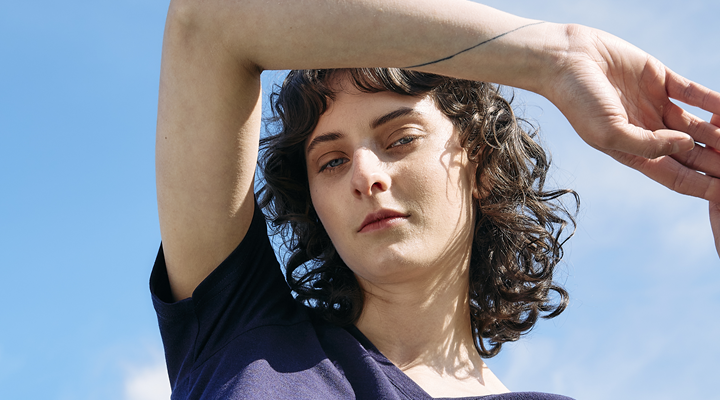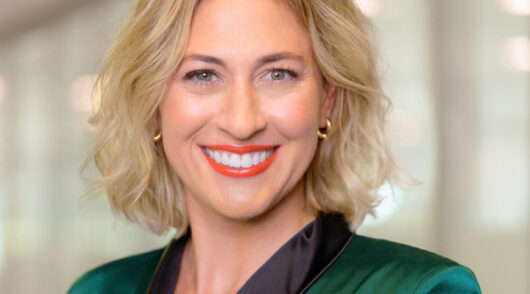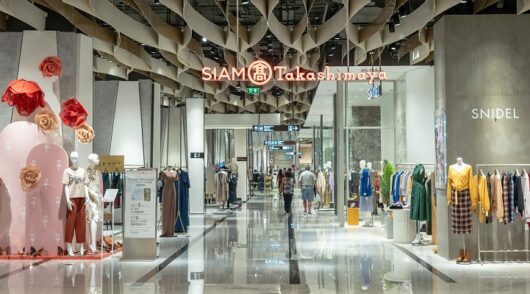The 2024 Australian Retail Outlook is out now. This must-read resource is packed with exclusive insights from Inside Retail’s survey of retailers about their performance, plans and predictions for the year ahead; trend analyses and advice from industry experts; and interviews with leading retailers, including Ikea, Lush, Outland Denim, Milligram, and many more, about their growth strategies in 2024 and beyond.
To give you a glimpse of what you can expect from this year’s report, we are sharing the first article below. Be sure to download the 2024 Australian Retail Outlook to discover more.
Did you find 2023 ordinary or even downright tough? If it’s any comfort, you are not alone. We weren’t sure just how tough things were until we conducted the Australian Retail Outlook survey and found that only 30 per cent of the retail executives described trading conditions as ‘good’.
So, what made trading conditions for the rest either ‘ordinary’ or ‘poor’? Every retailer knows to put the customer at the centre of their business, so we’ll start with them.
Two-speed shoppers
It’s become a cliché to say that consumers are struggling with the increased cost of living.
The Australian Bureau of Statistics reported that, in the first three quarters of 2023, household spending on services increased by 9.6 per cent but was flat for goods (-0.1 per cent). More importantly, non-discretionary spending rose 9.2 per cent, while discretionary spending barely increased (0.3 per cent). The net result is that finances in the average household went backwards all year, to the point where savings are now at near 16-year lows of just 1.1 per cent.
The impact was felt across all segments, with over 90 per cent adopting deal-seeking behaviour and reviewing their spending choices, CommBank found. But this didn’t necessarily translate into reduced spending. Dr Jana Bowden, a professor at Macquarie University Business School, said it is important to understand the nuances of this new retail environment.
“The story around ongoing consumer spend in the face of an ongoing cost-of-living crisis isn’t cut and dry. The data is murky, multifaceted and it’s a moving feast. It’s necessary to dig a little deeper to get a granular view of it,” Bowden told Inside Retail.
In terms of saving money, the most common consumer strategies included using promotional codes, cashback offers and rewards (73 per cent), CommBank found, and more are shopping at sales events like Black Friday and Cyber Monday, a study by the Australian Consumer and Retail Studies (ACRS) unit of Monash Business School found. Nearly half (47 per cent) also shopped for lower-priced brands more than they did 12 months ago, the ACRS stated, which has helped drive the increase in sales of home brands.
Many consumers also took the longer view, however, with 47 per cent shopping only for known and trusted brands and 30 per cent choosing to purchase higher-quality items that would last longer, CommBank stated. Clearly bad news for the ‘cheap and nasty’ end of the market.
Alex Downie, associate director of Sydney-based private equity firm Glow Capital Partners, commented that the gap between the best Australian brands and the rest has grown wider in the last 12 months. “As consumers have tightened their wallets, they have become more selective. We’ve seen top-tier brands continue to perform while others with less customer buy-in have seen their sales drop off,” Downie told Inside Retail.
The big and small of it
The changes in shopper spending appear to have had the most impact on small and medium-sized businesses, with 41 per cent of SMB retailers performing below or far below their FY23 forecasts and two-thirds of SMBs lacking business confidence and concerned or uncertain about the year ahead, per the Australian Retailers Association (ARA).
Part of the issue is that costs have increased by more than 10 per cent for one-in-three SMB retailers (32 per cent).
The story was very different at the top end of town, where Inside Retail’s annual report on Australia’s Top 25 Retailers found that in FY23, all of the retailers in the top 10 made more than $5 billion and increased their revenue year on year.
Amid the stellar performance of the very largest retailers, Bunnings shone. Along with increasing revenue, Michele Levine, CEO of consumer research consultancy Roy Morgan, said Bunnings managed the single largest improvement in trust of any trusted brand in the last 12 months and is now the second most trusted brand in Australia.
“Bunnings has harnessed many of the foundational pillars of a trusted brand, including great customer service, communicating what it stands for and delivering, being an active part of the community, solving customers’ problems and expertise and product knowledge,” Levine said.
In fact, a massive consumer survey conducted by KPMG identified Bunnings as providing the best customer experience of any large retailer.
For the whole sector, things do appear to be looking up in the longer term. In its December 2023 Retail Health Index report, KPMG predicted that the retail sector would return to positive territory as early as Christmas 2024, driven by net population growth, slowing interest-rate hikes, and the wealth effect of higher property prices.
Big changes all around
The retail playing field also underwent major changes in 2023, with multiple acquisitions and mergers.
Among the largest of these was the reverse buyout of Sigma by Chemist Warehouse to consolidate the retail pharmacy sector into a two-horse race. Competition in the pet market may similarly decrease in 2024 with the ACCC permitting Woolworths to take over Pet Stock.
Other sectors were also busy.
In August, global private equity firm Advent International acquired a majority stake in designer dress label Zimmermann, reportedly for well over $1 billion. That same month, Japanese beauty giant Kao Corporation picked up the popular self-tanner and skincare brand Bondi Sands, in a deal estimated to be worth $450 million.
Prior to that, French cosmetics giant L’Oréal paid $3.7 billion for luxury skincare and beauty brand Aesop and the Michael Hill group purchased the Bevilles jewellery chain.
To top it off, both Pizza Hut and the Australian arm of 7-Eleven convenience stores changed hands in 2023.
Retail intelligence goes artificial
While automation has increased across the whole retail supply chain in the last four decades, there is no doubt that in the next few years, the use of artificial intelligence (AI) will transform every aspect of the business of selling.
In an interview with Inside Retail, data and digital expert Renaud Frisé listed just a few of these developments, describing how AI will sift through not only past sales data but also real-time analytics, customer behaviours, market trends, and even external factors like weather conditions or local events that might impact demand. This data will help retailers take stock optimisation to new levels, increasing both profitability and customer satisfaction.
Frisé also said that AI will directly impact customers, with AI-enabled smart trolleys that accurately tally products and also take payment, potentially saving customers time and reducing labour costs and retail theft. Customer satisfaction will also increase as AI-powered virtual try-on facilities evolve and finally meet customer expectations.
In the words of the ARA, AI could be the silver bullet that retailers are looking for: the ability to reduce costs and improve service.
Remarkably, the Australian Retail Outlook found that only 19 per cent of retailers nominate AI as a big driver of growth in 2024. The opportunity for early movers to leverage AI and get ahead of their competitors is clear.
Going in circles
At a more fundamental level, however, the circular economy challenges the basis of consumerism and the modern-day retail paradigm on which it is built.
For years now, consumer surveys have tracked shoppers’ increasing commitment to sustainability, to the point where more than three-in-four (77 per cent) want brands to provide more information about their sustainability efforts, a survey by Human8 found.
What has been a big advancement, however, is that 67 per cent of Australians are now demanding that brands go beyond being sustainable and take responsibility for reversing the damage to the environment.
In practical terms, this translates into the three R’s: Repair, Reuse, and Repurpose – strategies that innovative fashion retailers have already adopted.
Consumers have leaped into the circular economy, with three-quarters having bought second-hand clothes in the last year, and wardrobes now estimated to consist of pre-owned fashion items, Reluv said.
High-profile brands like Patagonia, R.M.Williams, Kathmandu and Balenciaga have already embraced resale and repair services and others are finding their own ways to participate in the circular economy.
For example, the Inside Retail list of the 20 Coolest Retailers in 2023 included Frank Green – which has developed a cult following behind its reusable products – and Goodbyes, which is disrupting the resale market by making it desirable to shop second-hand. Scoop Wholefoods has long been a key player in minimising food waste and is now entering the beauty category.
Forward-looking retailers and brands will recognise that while the circular economy is now focused on the fashion sector; it is only a matter of time before consumers make similar decisions in all their purchasing.
Just like AI, the circular economy should be on the agenda for every retailer.
So, there you have it, the year 2023 has been one of excitement and evolution. And while you may feel that the word that best describes it is ‘exhausted’, in 2024 we think it will be ‘energised’.
Best of luck!






